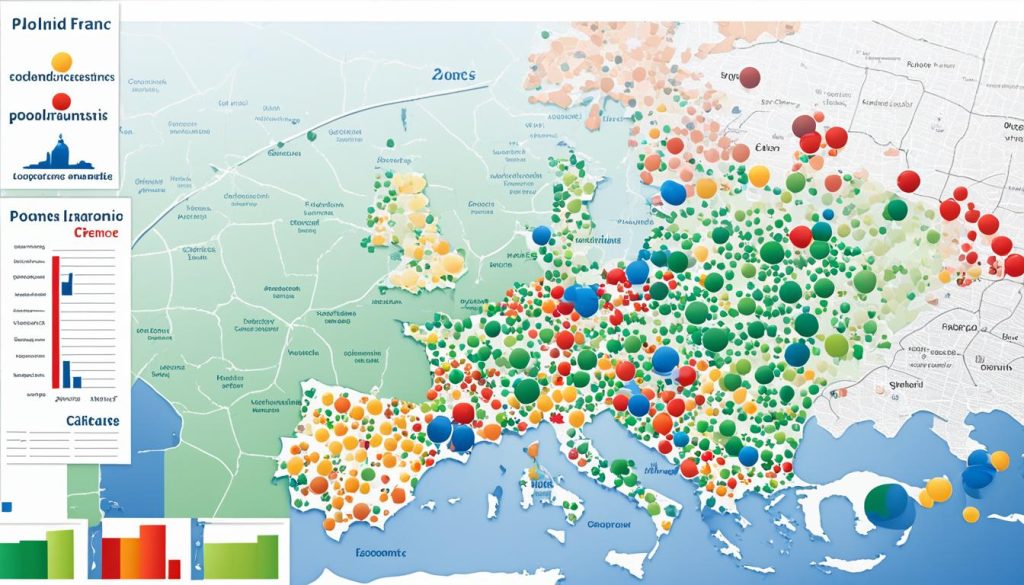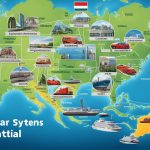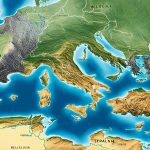Looking at the economic comparison and quality of life, France and Poland show clear differences. We aim to understand the living standards and cost of living in Europe. Focusing on France vs Poland, we explore how each country shapes its economy and citizen’s daily life.
Introduction to the Comparative Analysis
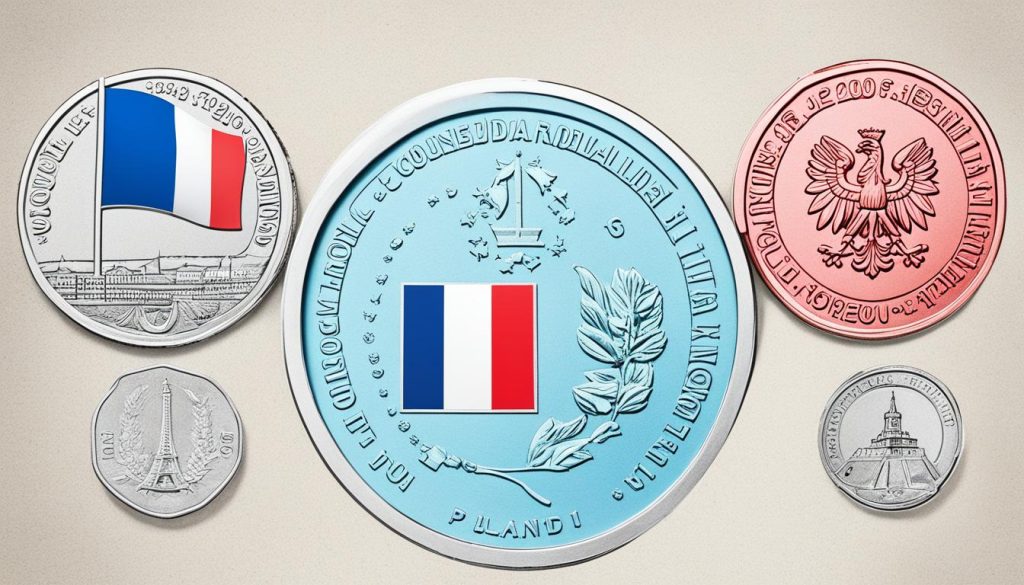
The quest to understand different cultures leads us to compare France and Poland. We look at their economic and social wellbeing. This study highlights the differences and common problems they face in Europe.
By looking at population, life expectancy, income, and environment, we get a basic idea for this study. It shows the mix of Western and Eastern European life. This helps us understand what quality of life means in these areas.
- Population nuances and demographic trends between the two nations
- Comparative healthcare efficacy and accessibility criteria
- Economic indicators: income levels and life expectancy as quality of life assessment barometers
- Environmental considerations shaping the nations’ quality of life matrices
Poland is praised for its low unemployment. France is known for its excellent healthcare. These differences highlight the importance of assessing quality of life.
- Scrutinising unemployment statistics as a measure of economic engagement
- Evaluating healthcare quality as a significant factor in societal wellness
Our comparison gives vital insights into how each country supports its people. We consider their history and culture. This influences their economy and social life. Quality of life is complex. Our study between France and Poland tries to capture its many sides.
Geographical and Demographic Overview

Exploring France and Poland, we find a mix of vast lands and bustling cities. The comparison of areas and population density tells the tale of two unique countries in Europe. A deeper look at Paris and Warsaw reveals their distinct vibes.
Area and Population Density
France stretches over about 549,087 km², making it one of the biggest European countries. Poland’s area is smaller, at 312,680 km², yet it’s packed with history and culture. Both countries share similar population densities, with France at around 123.8 people per km² and Poland at 117.8. This similarity sheds light on how both countries manage space and where people live.
Capital Cities: Paris and Warsaw
Paris and Warsaw are the hearts of their countries. Paris is known for its landmarks, art, and food, making it a key global city. Warsaw is known for its resilience and modernization, standing as an important European city. Both capitals offer unique experiences reflecting their nations’ characteristics, attracting many to their vibrant environments.
An Insight into National Economies
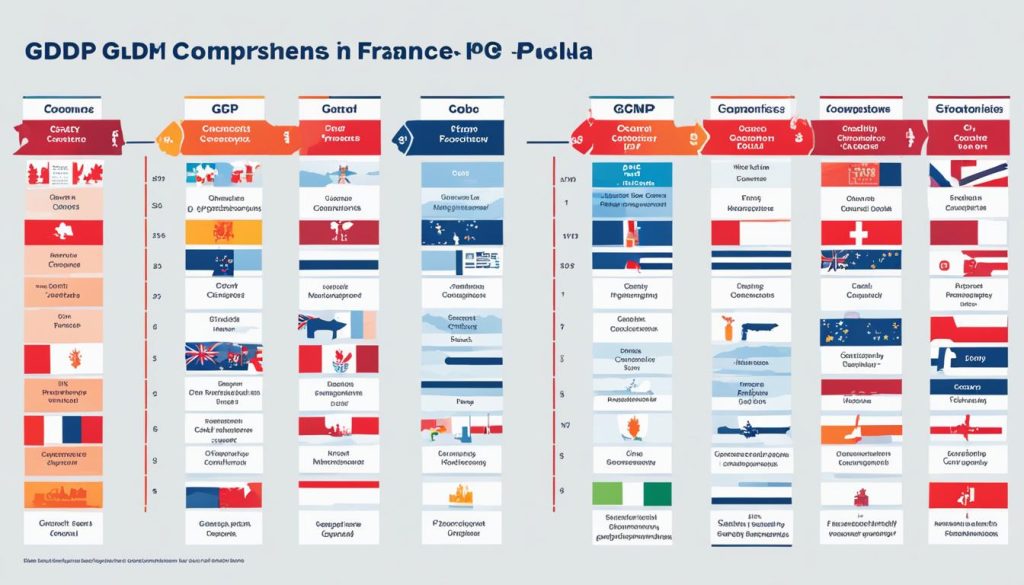
The world of economics is shaped by big ideas like GDP and inflation rates. Studying France and Poland, we see how such factors show a country’s financial health. It’s interesting to compare these nations through these indicators.
Comparing GDP and National Income
Looking at GDP, France leads with 2.779 trillion USD, while Poland has 688 billion USD. This shows France’s stronger economy. National income also tells us how much wealth a country creates. These differences highlight each country’s economic strength and their investment appeal.
Unemployment and Inflation Rates
In Poland, only 2.6% of people are without jobs, compared to France’s 7.4%. This suggests Poland is doing well at creating jobs. However, Poland has an inflation rate of 14.43%, much higher than France’s 5.22%. These rates show the economic challenges they face, like how much things cost and the value of money.
Standard of Living: Cost of Living and Average Income
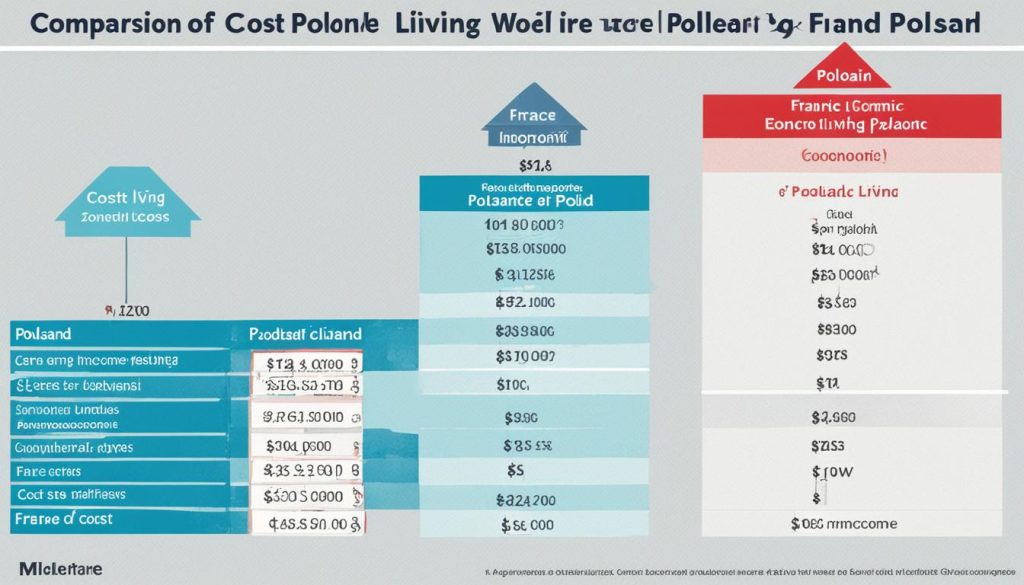
Looking at France and Poland, we see big differences in cost of living and income. These differences affect people’s economic well-being. We will examine specific figures that show the financial situation of people in these countries.
In a comparison, it’s clear that living costs in France are much higher. But, French people also earn more on average than those in Poland. This creates a situation where the standard of living in each country is influenced by living costs and income.
Commercial Taxes and Contributions
Studying commercial taxes and contributions highlights how government policies affect people. In France, the portion of income spent on taxes is much higher than in Poland. This difference has a big impact on what social services and public benefits each country can offer.
- The difference in taxation reflects the countries’ different economic approaches.
- Commercial contributions show what the government expects from its citizens in taxes.
- The balance between taxes paid and services received shapes economic welfare.
In summary, living in France means higher expenses and incomes but also big taxes. Poland, on the other hand, offers a simpler economic life with lower incomes and taxes.
Socioeconomic Indicators: Health and Civil Rights
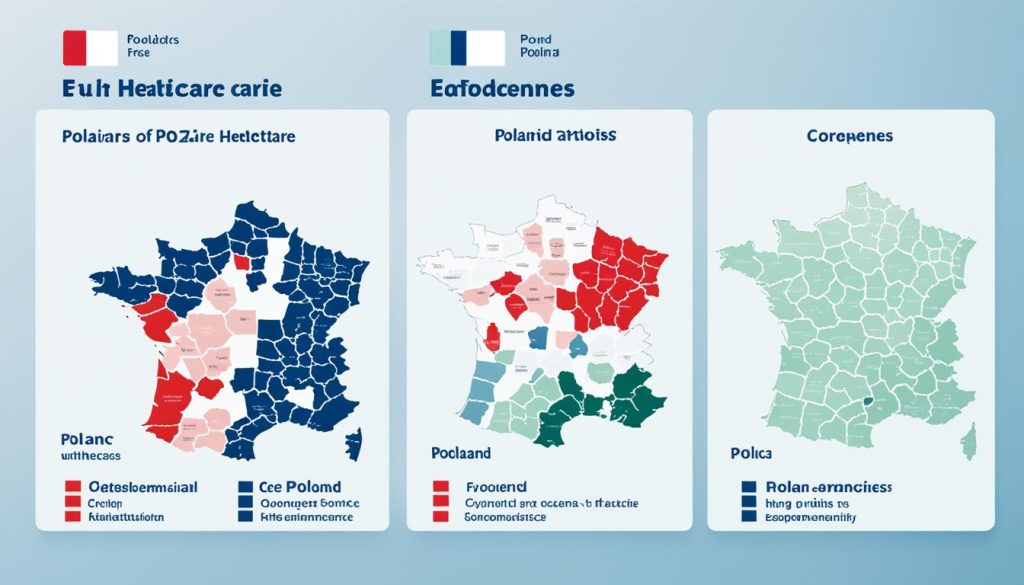
A strong healthcare system, protecting civil liberties, and watching over quality of life measures are key for a forward-moving society. France and Poland are great examples to see how these aspects affect people’s lives.
Looking at healthcare, France is ahead with its services being top-notch and easy to get. This shows how having great healthcare makes life better for people. Poland, while doing its best, faces some hurdles in reaching the same level.
- France: Healthcare score of 89 showing top healthcare services
- Poland: Healthcare score of 78 showing some healthcare challenges
On the topic of civil liberties, France shines in safeguarding personal freedoms and social norms. It has a high score, showing its dedication to rights and values. Poland, however, shows there’s room for improvement in its civil rights efforts.
- France has a civil liberties index of 84, showing strong rights protection
- Poland’s index is at 64, pointing out the areas where it needs to bolster civil rights
These indicators help understand how people live today. They show what governments prioritize to make life better for everyone. France and Poland are both working hard. They aim to balance health services and freedom to improve living standards for all.
Assessment of Public Services and Infrastructure
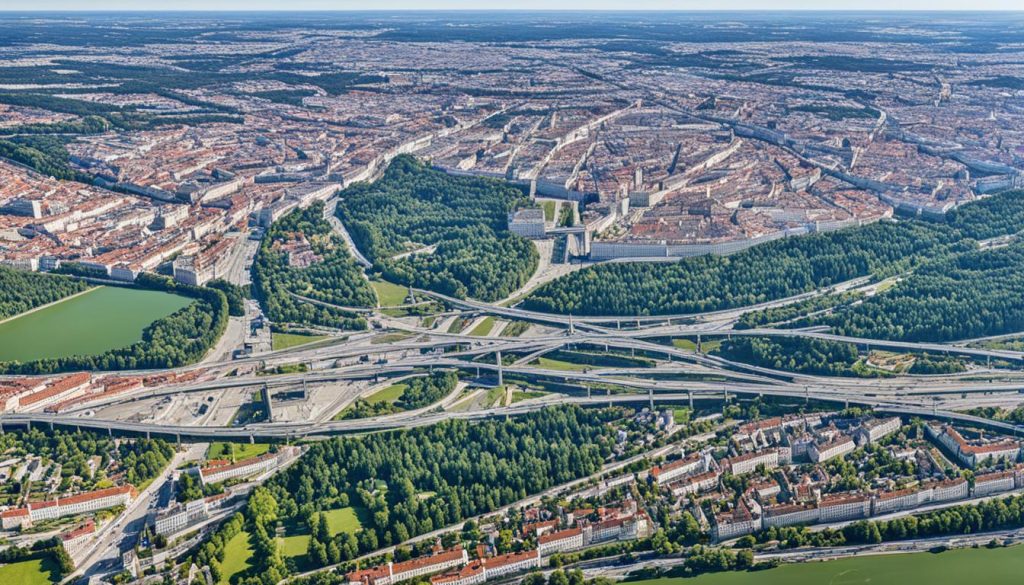
When we look closely at public services and infrastructure, we get a clear view on France and Poland. We compare their transport and healthcare systems. This shows how each country invests and performs in these areas.
Roadways, Railways, and Airports
France has worked hard to build strong transport links. It has roads, railways, and airports that connect cities and countryside areas. The country’s roads cover 1.09 million km. It also boasts a well-used railway system and 119 airports for passengers. These make travel easier for everyone and help with tourism and trade too.
Healthcare System and Hospital Beds
Looking at healthcare, France offers good care with 5.91 hospital beds per 1000 people. Poland has a bit more, with 6.54. But, Poland has more doctors, showing differences in healthcare methods and reach. These numbers show how much a country values health and the strength of its healthcare system.
Living Conditions: Housing, Healthcare and Education

Looking into how people live in France and Poland shows us a lot about housing, healthcare, and education. These are key areas that show how well a society is doing. The efforts made in these areas show how much France and Poland care about their people’s wellbeing.
In France, housing quality is generally very good. People have many choices, from city flats to quiet country houses. The government in France works hard to make sure homes are both good and affordable. In Poland, there’s been a big improvement in housing, with more modern comforts. But, differences between city and country homes are still there.
- Quality of residential construction
- Access to affordable housing
- Urban vs rural housing disparities
How good healthcare services are tells us a lot about a place. France is known for its great healthcare, which is among the top worldwide. Poland has made progress in healthcare too. But, it still has a way to go in making sure everyone can get the care they need, especially outside big cities.
- Number of healthcare facilities per capita
- Quality of medical services and staff
- Healthcare coverage and insurance systems
In terms of education standards, France’s education system is wide-reaching and well-regarded. It is known for its tough courses and top institutions. Poland values education highly as well. It’s always working on ways to make education better and to link what people learn to jobs.
- Primary and secondary education quality metrics
- Higher education institutions’ reputation and rankings
- Vocational training and lifelong learning opportunities
Talking about living conditions, we see how important housing, healthcare, and education are. They paint a picture of how societies support their people. France and Poland both aim to boost these areas. However, each has its own challenges to tackle. Looking at these parts of life gives us a better idea of what living in these countries is like.
Energy Consumption and Production
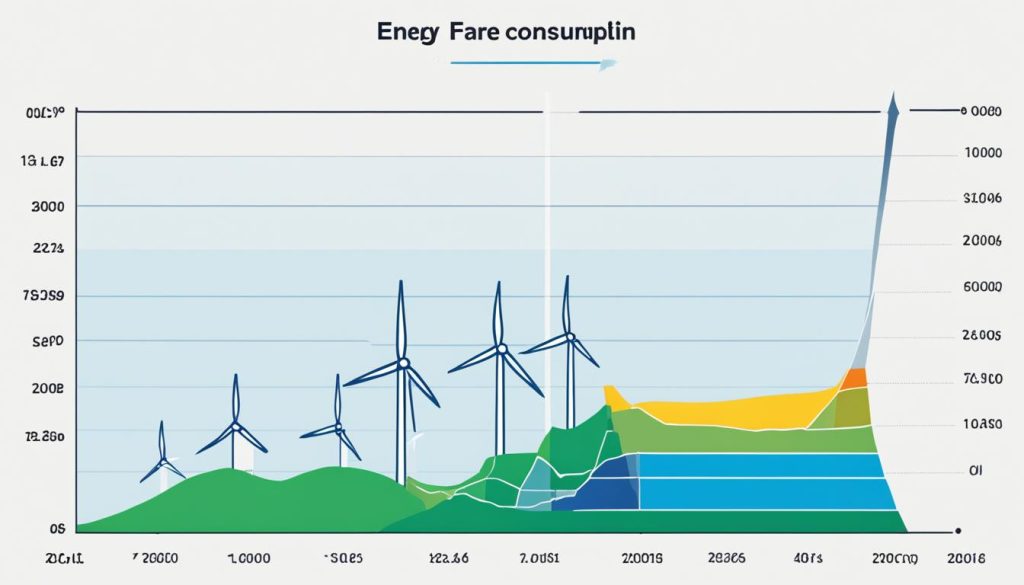
When we look at energy production and energy consumption, France and Poland are quite different. France focuses a lot on using renewable energy sources. This move is all about being eco-friendly. Poland is trying to catch up but still has a lot to do.
Production Capacity and Energy Exports
France produces a lot more energy than Poland. It makes over 1.2 million GWh. This lets France not only use the energy it needs but also send a lot abroad. Poland, however, makes about 414,000 GWh. This shows Poland’s energy market is growing but not fully developed yet.
Renewable energy sources are key to the energy sector. France is a leader in renewable energy in the European Union thanks to its focus on green production. Poland still relies a lot on coal. But, it’s now moving towards renewable energy too, slowly but surely.
- France’s energy generation capacity: 1,214,232.4 GWh
- Poland’s energy generation capacity: 414,076.4 GWh
- Energy exports from France: 64,425.0 GWh
- Energy exports from Poland: 7,357.0 GWh
The energy situation in France and Poland shows how different they are. It highlights their energy independence and their environmental strategies.
Environmental Concerns: CO2 Emissions and Climate Factors
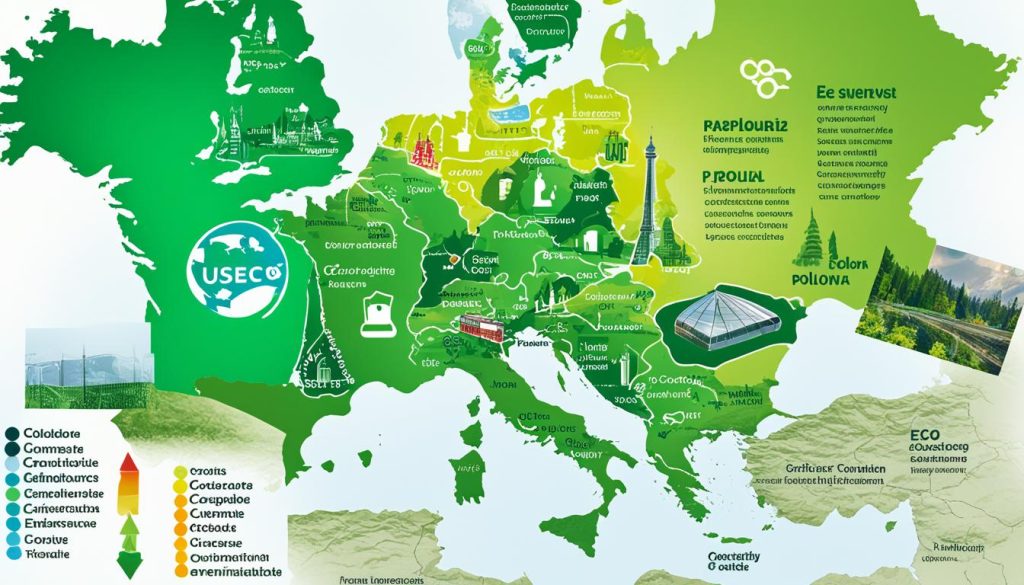
It’s crucial to focus on environmental sustainability in France and Poland’s fight against climate change impact. They are working hard to improve. Poland, despite being smaller, has higher CO2 emissions. This shows they need to rethink how they use energy and run industries.
France, on the other hand, emits 267.15 million tonnes of CO2, which is less even though it’s bigger. Thanks to its climate, France can use more wind and solar energy. This helps with environmental sustainability. But both countries must keep innovating and investing in green solutions. This will reduce their carbon footprints and show strong support for international climate goals.
The weather affects how France and Poland deal with environmental rules. France enjoys milder weather, making it easier to save energy and stay warm. Poland faces tougher winters. But both countries get similar rain and humidity. This means they are in this together, fighting climate change.
- Increasing investments in renewable energy sources.
- Implementing stricter regulations on industrial CO2 emissions.
- Promoting public awareness about climate change impact.
- Enhancing international cooperation on environmental issues.
France and Poland face a big task in dealing with climate change. They aim to grow economically without harming the environment. By leading the way, they hope to show the world how to win this important fight.
Technology Penetration: Internet and Telecommunications
The entry into the digital age highlights how France and Poland embrace tech. France boasts better internet and broadband access compared to Poland. This shapes their digital worlds differently, with France leading in tech for connections and new ideas.
Internet Users and Broadband Internet
Good internet service marks tech progress. France shines with 58 million people online. This high use makes a society skilled in online tools. France also values broadband, having 31.93 million subscriptions, which boosts its digital economy.
Poland is improving its digital presence, with 32 million online users. However, it’s behind France. Poland’s 9.15 million broadband subscriptions show where it can grow telecom-wise.
- France’s tech infrastructure results in more internet users.
- In France, broadband is key for digital growth, unlike Poland.
The tech gap between France and Poland shows in their digital readiness and economic prospects. Telecommunication networks are crucial today. They affect a country’s global standing and its people’s lives.
The Labor Market: Unemployment and Employment Rates
Studying the labor market shows us the health of an economy and the well-being of society. France faces a challenge with its high unemployment rate. This raises concerns about job security and the feeling of economic stability. In contrast, Poland shines with low unemployment, signaling strong employment opportunities. This boosts the nation’s workforce morale.
In Poland, people feel confident about their jobs. This confidence encourages more economic activity and career progression. On the other hand, France’s joblessness may signal economic change or shifts in market demand. Nevertheless, France is trying hard to improve job security through employment incentives and training programs.
- Analysis of employment trends and their impact on job security.
- Examination of government policies designed to stimulate job creation.
- Factors contributing to Poland’s low unemployment rates.
- Challenges faced by France in addressing labor market uncertainties.
France is working hard to better its employment scene. Meanwhile, Poland sets a positive example for its people. Jobs are available, and efforts to enhance worker skills are evident. This shows a commitment to keep the economy strong and ensure jobs are sustainable.
The difference in unemployment and employment rates between France and Poland highlights Europe’s labor market variability. Each country’s unique economic story and efforts to stabilize employment are clear. As they adjust their labor markets, the talk will focus on balancing economic growth with job security.
Cultural Richness: Languages and Religions
France and Poland are rich in culture, with many languages and religions. These elements make their cultures vibrant and meaningful. Besides French and Polish, there are minority languages valued for their cultural contribution.
In France, people also speak Breton, Occitan, and Alsatian. Poland values the Silesian and Kashubian languages. This variety of languages helps people connect and share cultures.
- Diverse religions in France and Poland shape their traditions and holidays.
- In Poland, Roman Catholicism is very important. It influences many Polish traditions and values.
- France values many religions equally, from Christianity to Islam and Judaism. This creates a respectful blend of beliefs.
This mix of languages and religions in France and Poland makes them unique. It affects their way of life and national identity.
Quality of life Index: A Holistic View
The quality of life index gives a detailed view of a country’s health. It goes beyond money-based measures, looking at both seen and unseen factors of happiness. This index is crucial for comparing places like France and Poland on overall well-being.
-
France scores well due to its stable government and pleasant weather. These factors greatly impact how happy people feel.
-
Poland, despite its tougher weather and complex politics, ranks well for affordability. This makes it attractive to those wanting good living conditions without spending a lot.
Holistic assessments with the quality of life index show the highs and lows of societal health. They make clear how different strategies and environments affect a country.
Compare Economy and Quality of Living between France and Poland
Looking at the economic disparity between France and Poland shows a big gap. France shines with its high GDP and great healthcare but struggles with high costs. Poland, on the other hand, is more affordable but deals with inflation and political ups and downs.
Talking about living quality in these countries, we see the impact of their economies. The France-Poland comparison makes us think about the balance between money strength and living affordably. Here are some key points:
- Living in France is much pricier than in Poland, which affects how people spend and save.
- France’s healthcare is top-notch, but Poland is catching up even though it’s still behind.
- France has higher taxes on shopping and business, which reduces what people and companies can spend.
- Poland, despite more inflation, is growing strong, showing promise for the future.
This comparison between France and Poland’s economies and living conditions offers deep insights. It’s crucial for decision-makers, investors, and everyday people. It helps us understand the complex mix of factors that influence life and money in Europe.
Conclusion
When we look at the results of this study, we see two stories. France and Poland show us different paths to success. France stands out with its strong economy and high living standards. This is due to its powerful global position and well-supported public services.
Despite higher living costs, France shows us a way to combine economic strength with a good life. This blend leads to a society that lasts.
Poland offers another view of life. It’s a country that is quickly growing its economy. Polish strategies focus on making living conditions better by keeping taxes low and managing costs. They do this while dealing with rising prices.
This look at life in Poland shows a nation striving to be strong and lively. It’s aware of the cultural and social factors that affect its people every day.
From France and Poland, we learn that the good life is complex. It comes from how economic plans, social policies, and culture mix. This summary shows the many ways countries can make life better. It adds to the worldwide talk on how to create great living conditions, unique to each country.

